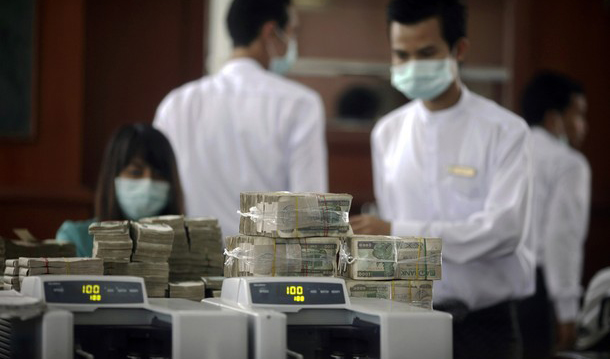For most of 2010, one US dollar was equivalent to more than 1,000 kyat, but dropped to less than 900 kyat by the end of the year. There have been several explanations for this. Besides the declining value of the dollar worldwide, other factors include a dramatic increase in foreign investment, especially in the energy sector; high oil and gas prices (Burma’s biggest export is natural gas); and a spending spree by cronies of the military elite, who in the run-up to this year’s transition to ostensibly civilian rule used their massive dollar reserves to buy up real estate, gems and state-owned businesses.
While these factors may have driven up the value of the kyat, however, they have done little to put the country’s finances in order. In August, when budget figures were presented in Parliament for the first time since 1987, Maung Toe, the secretary of the Public Accounts Committee of the country’s Pyitthu Hluttaw, or Lower House of Parliament, said that Burma would run a deficit of about 2.2 trillion kyat (US $2.9 billion) in the 2011-2012 fiscal year.
Responding to a question by an MP, Maung Toe said the government expected to raise 5.78 trillion kyat ($7.7 billion) in revenue, while expenditures were budgeted at 7.983 trillion kyat ($10.6 billion). Although he provided no details about government expenditure, an official document released earlier this year, known as the government gazette, showed that nearly a quarter of this year’s budget would go to the military.
Although the sale of stated-owned property might have helped to reduce the country’s ballooning fiscal deficit, the lack of transparency that characterized the entire process makes it impossible to know how much of the money raised went into public coffers, and how much wound up in the generals’ private bank accounts. It is also worth noting that much of this massive debt was used to finance the construction of Naypyidaw, with its imposing public buildings, extensive road network and lavish residences for the retired generals.
Despite its efforts to make all the right noises about poverty alleviation and curbing corruption, the Thein Sein administration continues in the footsteps of its junta predecessor in spending heavily on the military, while doing little in the way of implementing policies to support households and businesses.
Meanwhile, Burma’ central bank remains reluctant to tighten policy aggressively, as it is not operationally independent from the government. Burma’s domestic inflationary pressures remain strong owing to the fact that the central bank—which is operated by the Ministry of Finance and Revenue—is always ready to finance the budget deficit by printing money, with the consequent growth in domestic credit pushing up prices. Combined with pressure from rising global consumer prices, this could send Burma’s inflation rate up to 16.2 percent in 2011, according to the Economist Intelligence Unit.
Of course, it is the very poor, who make up the bulk of Burma’s population, who bear the brunt of this erosion of purchasing power. But the country’s much smaller middle class also struggles with the distortions inherent in an economic system heavily weighted to favor a tiny handful at the top.
Ironically, despite the rising value of the kyat, most middle-class Burmese consider their national currency essentially worthless. Those who somehow manage to rise above mere subsistence aspire to send their children to school in Singapore, Malaysia or Thailand, or to move to these countries themselves, to escape being squeezed by ludicrously high duties on the sort of goods that most people of moderate means take for granted.
On the Road to Reform?
While most of Burma’s economic problems are seen as an endemic feature of life under an entrenched authoritarian regime, there appears to be at least a nascent recognition among the country’s rebranded rulers that the status quo is simply unsustainable. How far they are prepared to go in reforming a system of their own creation is, however, an open question.
If Thein Sein was hoping that a few cosmetic changes would suffice to bring Burma into the international mainstream, the renewed focus on the kyat has served to highlight just how bizarrely out of step with the rest of the world the country remains. In addition to setting an official exchange rate that would cripple the economy if it were actually enforced, the government continues to print its own US dollars, in the form of dollar-denominated Foreign Exchange Certificates (FECs).
At least on this front, the government seems to be getting a grip on reality. Government officials have reportedly told Burmese business leaders that the FEC is on its way out.

